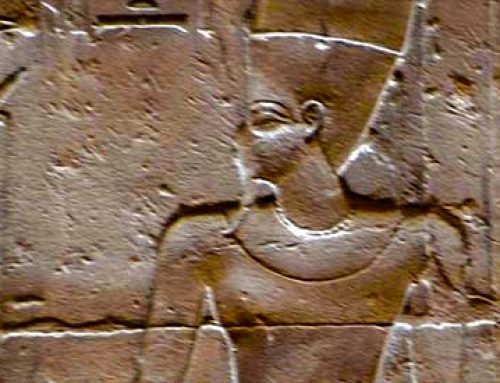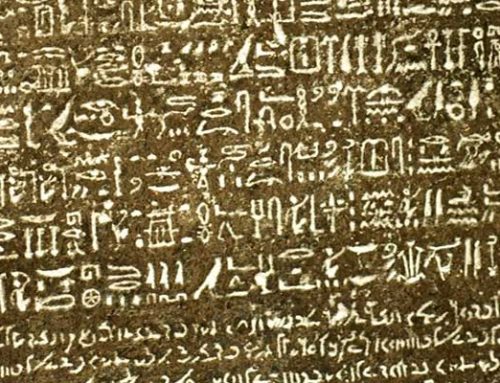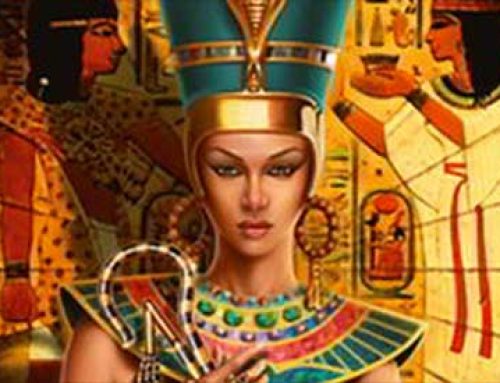The people of ancient Egypt did not have scientific explanations for natural phenomena. They believed sunshine and the great Nile River were gifts from their many gods. The beliefs of the ancient Egyptians slowly changed over time, but many of their legends influenced Egyptian culture for thousands of years.
The ancient Egyptians believed Ra was the sun god who came to earth as the first ruler of Egypt. Egypt became very rich during Ra’s rule, but the people grew lazy and neglected to honor the sun god, so Ra used his magic to create a bloodthirsty lioness god named Sekhmet. Sekhmet reminded the Egyptian people of the power of Ra by terrorizing the Nile River Valley. When the Egyptian people showed their appreciation, Ra used magic to tame Sekhmet and turn her into Hathor, the goddess of love. This lesson tells us the Egyptian people both valued and feared the sun. The sun made it possible for Egyptian crops to grow, but the sun could also turn good farmland into desert where no crops would grow.
Ra’s many children included Osiris and Isis, the brother and sister who ruled the Nile River Valley after they taught the Egyptians to farm and domesticate animals. The Egyptian people praised Osiris and Isis for the many gifts they bestowed on their civilization. Seth was their jealous brother and the god of storms. Seth invited all of the gods to a great party. Near the end of the feast, Seth brought in a beautiful cedar chest.
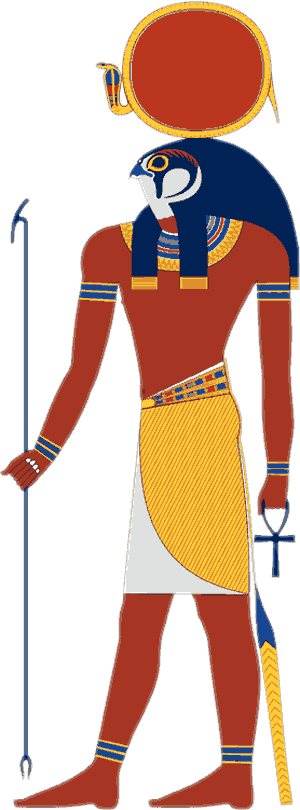
Ra_Egyptian_God
Ra, the ancient Egyptian sun god, was one of the most important gods in the Egyptian pantheon. In later dynasties worship of Ra was merged with Horus, so Ra is often depicted as having the head of a falcon.
“I will give this chest to whosoever fits in it most exactly!” The gods tried to fit into the box, but everyone was too big or too small. Seth had carefully measured his brother so that only he would fit in the chest space. Osiris was the last of the guests to lie down in the chamber.
“I am the exact fit, so the chest is mine,” cried Osiris and he climbed into the container.
“It is your chest and it is where you will be forever,” replied Seth as he sealed the lid and cast the chest and Osiris into the Nile. Isis recovered her brother’s body and returned it to Egypt. When Seth discovered what Isis had done, he ripped open the chest, tore the body of Osiris into fourteen pieces, and scattered the pieces along the whole length of the Nile.
The people of ancient Egypt believed that when their gods left this world they could live in an afterlife. The afterlife was a perfect version of ancient Egypt. In order to get to the afterlife, however, the gods first had to pass through the underworld. The underworld was a strange and dangerous place filled with fantastic and fearsome creatures. Traveling through the underworld required the Egyptian gods to be very clever because they had to complete many tasks. The Egyptians believed that their gods could not reach the afterlife unless their bodies remained in one piece in Egypt. Isis knew the body of Osiris had to be intact and buried in Egyptian sand, so when she found the pieces of her brother, she buried Osiris in a secret place where Seth could not find him.
Horus was the son of Isis and the god of the sky. Horus took the form of a falcon and brought the sun with him each day as he flew across the sky. The eyes of Horus were said to be the sun and the moon, but the moon was not as bright because it was damaged by Seth in a great battle. Horus subdued Seth, but he was never able to kill his uncle. This legend of Horus and Seth helps to explain why the Egyptians believed that they could never completely defeat evil and chaos.
Resources
Download this lesson as Microsoft Word file or as an Adobe Acrobat file.
View a Powerpoint presentation of this lesson.
Listen as Mr. Dowling reads this lesson
Lexile Measure 1110L
Mean Sentence Length 18.47
Mean Log Word Frequency 3.57
Word Count 628
Mr. Donn has an excellent website that includes a section on Ancient Egypt.
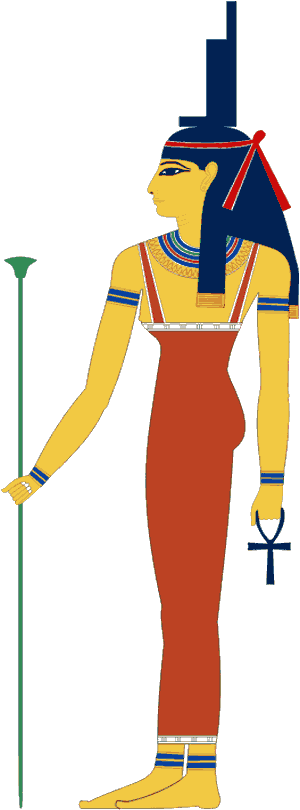
Isis_Egyptian_goddess
Isis was is depicted holding an ankh in her left hand. The ankh was an ancient Egyptian symbol of life.


